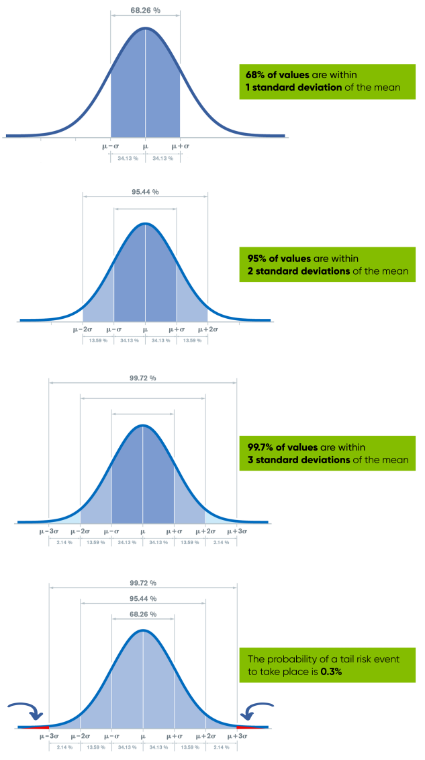April Webinar Key Takeaways: Standard Deviations, Tail Risk & The Rule of 16
In April, OIC hosted two webinars led by Mat Cashman, OIC Instructor and Principal, Investor Education, OCC. The sessions provided attendees with foundational tools for navigating option markets using volatility metrics. The first, Standard Deviations and Tail Risk, provided a framework for assessing probability and extreme market events. The second, The Rule of 16: Deriving Daily Meaning from an Annual Volatility Metrics, delved into the Rule of 16 — a method for translating annual implied volatility into daily, weekly, or monthly expectations. Together, these sessions provide frameworks for understanding how volatility translates into real‑world price movements and emphasize how implied and historical volatility is central to option valuation and risk management.

What We Covered:
- Standard Deviations: Used to segment broader price expectations - 68% of the time we're going to fall within ±1 SD, 95% of the time we're going to fall within ±2 SDs, and 99.7% within ±3 SDs - helping to gauge movement likelihood.
- Standard Deviation Formula: Utilizes implied volatility, stock price, and the square root of trading periods to derive expected price movements.
- Implied vs Historical Volatility: Historical is backward-looking; implied reflects forward-looking market expectations that shape option pricing.
- Volatility’s Impact on Pricing: Higher implied volatility raises both call and put prices, flattening standard deviation curves and influencing delta and gamma.
- Dynamic Volatility: Implied volatility can shift regardless of stock price movement, affecting option valuation and strategy.
- Volatility Assumptions: Having a clear stance on future volatility is crucial when evaluating positions and stock behavior.
- Tail Risk Awareness: Highlights the importance of accounting for large, unexpected market moves within a comprehensive risk model. Black Monday (1987), the Flash Crash (2010) and the COVID 19 plunge (March 2020) are examples.
- Rule of 16: Helps traders convert annual implied volatility into daily, weekly, or monthly expectations for market movements.

Example:
$100 stock with 20% IV implies $1.25 of forecasted movement, on average, each trading day during the life of the option.

That same $100 stock jumps to $107 in one session - roughly 5.6 daily SDs.

Keep Learning:
- Key Moments From Standard Deviations and Tail Risk
- Key Moment From The Rule of 16 – Deriving Daily Meaning from an Annual Volatility Metric
Meet OIC instructor Mat Cashman:

Mat Cashman
Mat is a Financial Services professional with 20 years of experience trading in all segments of the Derivatives market. He started his career on the trading floor of the Chicago Board of Options Exchange in 2000 and has since traded multiple asset classes across a wide array of exchanges including the CME, CBOT, and the Eurex Exchange.

